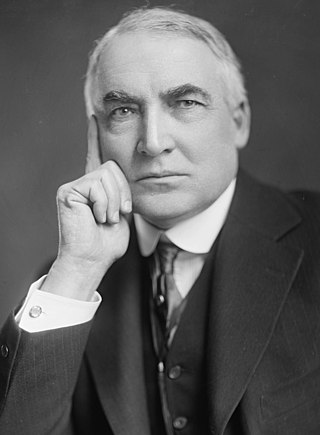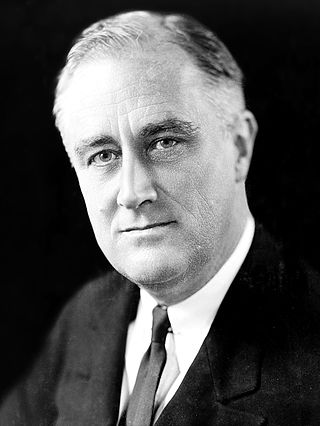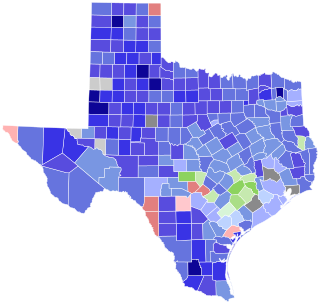Related Research Articles

The 1876 United States presidential election was the 23rd quadrennial presidential election, held on Tuesday, November 7, 1876. Incumbent Republican president Ulysses S. Grant declined to run for a third term, so the party chose Rutherford B. Hayes, the governor of Ohio, as its nominee. The Democratic Party nominated New York governor Samuel J. Tilden as their nominee. It was one of the most contentious presidential elections in American history. Its resolution involved negotiations between the Republicans and Democrats, resulting in the Compromise of 1877, and on March 2, 1877, the counting of electoral votes by the House and Senate occurred, confirming Hayes as president. It was the second of five U.S. presidential elections in which the winner did not win a plurality of the national popular vote. This is the first time it happened since 1824. Following President Grant's decision to retire after his second term, U.S. Representative James G. Blaine emerged as the frontrunner for the Republican nomination. However, Blaine was unable to win a majority at the 1876 Republican National Convention, which settled on Governor Hayes of Ohio as a compromise candidate. The 1876 Democratic National Convention nominated Governor Tilden of New York on the second ballot.

The 1860 United States presidential election was the 19th quadrennial presidential election, held on Tuesday, November 6, 1860. In a four-way contest, the Republican Party ticket of Abraham Lincoln and Hannibal Hamlin won a national popular plurality, a popular majority in the North where states already had abolished slavery, and a national electoral majority comprising only Northern electoral votes. Lincoln's election thus served as the main catalyst of the states that would become the Confederacy seceding from the Union. This marked the first time that a Republican was elected president. It was also the first presidential election in which both major party candidates were registered in the same home state; the others have been in 1904, 1920, 1940, 1944, and 2016.

The 1920 United States presidential election was the 34th quadrennial presidential election, held on Tuesday, November 2, 1920. In the first election held after the end of the First World War and the first election after the ratification of the Nineteenth Amendment, Republican Senator Warren G. Harding of Ohio defeated Democratic Governor James M. Cox of Ohio. It was also the third presidential election in which both major party candidates were registered in the same home state; the others have been in 1860, 1904, 1940, 1944, and 2016.

The 1932 United States presidential election was the 37th quadrennial presidential election, held on Tuesday, November 8, 1932. The election took place against the backdrop of the Great Depression. The incumbent Republican President Herbert Hoover was defeated in a landslide by Democrat Franklin D. Roosevelt, the governor of New York and the vice presidential nominee of the 1920 presidential election. Roosevelt was the first Democrat in 80 years to simultaneously win an outright majority of the electoral college and popular vote, a feat last accomplished by Franklin Pierce in 1852, as well as the first Democrat in 56 years to win a majority of the popular vote, which was last done by Samuel J. Tilden in 1876. Roosevelt was the last sitting governor to be elected president until Bill Clinton in 1992. Hoover became the first incumbent president to lose an election to another term since William Howard Taft in 1912, and the last to do so until Gerald Ford lost 44 years later. The election marked the effective end of the Fourth Party System, which had been dominated by Republicans. It was the first time since 1916 that a Democrat was elected president.

Coke Robert Stevenson was an American politician who served as the 35th governor of Texas from 1941 to 1947. He was the first Texan politician to hold the state's three highest offices. In 1966, Recorded Texas Historic Landmark marker number 5118, honoring Stevenson, was placed on the Kimble County Courthouse grounds in Junction, Texas.

James Edward Ferguson Jr., known as Pa Ferguson, was an American Democratic politician and the 26th governor of Texas, in office from 1915 to 1917. He was indicted and impeached during his second term, forced to resign and barred from holding further Texas office.

Earle Bradford Mayfield was a Texas lawyer who, from 1907 to 1913, was a Texas State Senator. In 1922, he was elected to the U.S. Senate as a Democrat. He was the first U.S. Senator to be widely considered by the voters to be a member of the revived Ku Klux Klan in the 1920s. Mayfield quietly accepted KKK support but never said he had joined. He was defeated for reelection in 1928 when his opponent attacked his links to the KKK.

The 1922 United States Senate election in Texas was held on November 7, 1922. Incumbent Democratic U.S. Senator Charles Culberson ran for re-election to a fifth term, but lost the Democratic primary. A runoff was held between former Governor Pa Ferguson and Railroads Commissioner Earle Bradford Mayfield.

The 1920 presidential election in Texas was part of the 1920 United States presidential election in which all contemporary forty-eight states voted on November 2, 1920. State voters chose 20 electors, or representatives to the Electoral College, who voted for president and vice president.

The 1928 United States presidential election in Texas took place on November 6, 1928, as part of the 1928 United States presidential election which was held throughout all contemporary forty-eight states. Voters chose 20 representatives, or electors, to the Electoral College, who voted for president and vice president.

The 1926 Massachusetts gubernatorial election was held on November 2, 1926.

The 1920 United States presidential election in Illinois took place on November 2, 1920, as part of the 1920 United States presidential election. State voters chose 29 representatives, or electors, to the Electoral College, who voted for president and vice president.

The 1946 Texas gubernatorial election was held on November 5, 1946.

The 1944 Texas gubernatorial election was held on November 7, 1944.

George Peddy was an American attorney, military officer, and political figure from Texas. A 1920 graduate of the University of Texas School of Law, he practiced law in Houston with the prominent firm of Vinson, Elkins, Weems, and Francis. A Democrat, He served in the Texas House of Representatives in 1917 and ran two high-profile but unsuccessful campaigns for the United States Senate. A United States Army veteran of World War I and World War II, he attained the rank of lieutenant colonel while serving with the 5th Infantry Division in France during the Second World War, and received the Bronze Star Medal and Croix de Guerre.

The 1830 Vermont gubernatorial election took place in September and October, and resulted in the election of Samuel C. Crafts to a one-year term as governor.

The 2024 United States presidential election in Oklahoma is scheduled to take place on Tuesday, November 5, 2024, as part of the 2024 United States elections in which all 50 states plus the District of Columbia will participate. Oklahoma voters will choose electors to represent them in the Electoral College via a popular vote. The state of Oklahoma has seven electoral votes in the Electoral College, following reapportionment due to the 2020 United States census in which the state neither gained nor lost a seat.

The 2024 United States presidential election in Texas is scheduled to take place on Tuesday, November 5, 2024, as part of the 2024 United States elections in which all 50 states plus the District of Columbia will participate. Texas voters will choose electors to represent them in the Electoral College via a popular vote. The state of Texas has 40 electoral votes in the Electoral College, following reapportionment due to the 2020 United States census in which the state gained two seats.

The 1932 Texas gubernatorial election was held on November 8, 1932, to elect the Governor of Texas. Democratic nominee and former Governor of Texas Miriam A. Ferguson defeated Republican nominee Orville Bullington.

The 1920 Texas gubernatorial election was held on 2 November 1920 in order to elect the Governor of Texas. Former Democratic state representative Pat Morris Neff won comfortably in a four-way race against Republican nominee J. G. Culbertson, American Party of Texas nominee T. H. McGregor, and Black and Tan Republican nominee Hickerson Capers.
References
- 1 2 Ness, Immanuel; Ciment, James, eds. (2000). "American Party 1919-1920" . The Encyclopedia of Third Parties in America. Vol. 1. Armonk, New York: Sharpe Reference. p. 153. ISBN 978-0-7656-8020-4 . Retrieved November 11, 2023.
- ↑ "Senator Sebastian Will Be Honored with State Office, Is Pioneer Citizen". The Breckenridge Daily American. Vol. 5, no. 157. Breckenridge, Texas. p. 1. Retrieved March 27, 2024– via University of North Texas.
Because of condition sgrowing out of the Ferguson fight in Texas, Sebastrian at one time left the Democratic party and served as chairman of the American party organization in Texas.
- ↑ "Names Committeemen: Waco Selected as Headquarters of American Party". San Antonio Express. Vol. 54, no. 352. December 23, 1919. p. 3. Retrieved March 27, 2024.
- 1 2 Richardson, Darcy G. (2008). Others: "Fighting Bob" La Follette and the Progressive Movement: Third-Party Politics in the 1920s. Lincoln, Nebraska: iUniverse. pp. 76–82. ISBN 978-0595481262 . Retrieved March 27, 2024.
- ↑ "Another Richmond in the Field". The Houston Post. April 18, 1920. p. 34. Retrieved November 26, 2023– via The Portal to Texas History at the University of North Texas.
the announcement of Mr. Temple H. McGregor for governor on the American party ticket
- ↑ "American Ticket for State Named". Temple Daily Telegram . Vol. 13, no. 266. August 11, 1920. pp. 1 & 3. Retrieved March 27, 2024– via University of North Texas.
- ↑ "Texas Ex-Governor Candidate of New American Party". Richmond Times-Dispatch. Richmond, Virginia. April 22, 1920. Retrieved November 11, 2023– via Chronicling America: Historic American Newspapers at the Library of Congress.
- 1 2 Brown, Norman D. (1984). Hood, Bonnet, and Little Brown Jug: Texas Politics, 1921-1928 . College Station, Texas: Texas A&M University Press. pp. 98–99. ISBN 978-0-89096-157-5 . Retrieved November 9, 2023.
- ↑ Reese, T. B.; Gransberry, C. R. (1921). "Members of the House of Representatives, Thirty-Seventh Legislature". Legislative Manual of the Thirty-Seventh Legislature (PDF). Austin, Texas: Texas State Legislature. pp. 245–249. Retrieved March 26, 2024.
- ↑ "Lower House by 114-13 Unseats Neinast". The Houston Post. Vol. 36, no. 354. February 11, 1921. Retrieved March 28, 2024– via University of North Texas.
- ↑ "Republicans and Other Non-Democrats" (PDF). Texas Legislature. Retrieved March 25, 2024.
- ↑ "Sample Ballot". The Giddings News. Vol. 34, no. 25. November 3, 1922. pp. 4–5. Retrieved March 28, 2024– via University of North Texas.
- ↑ "National Affairs: Nominees". Time . June 16, 1924. Retrieved March 27, 2024.